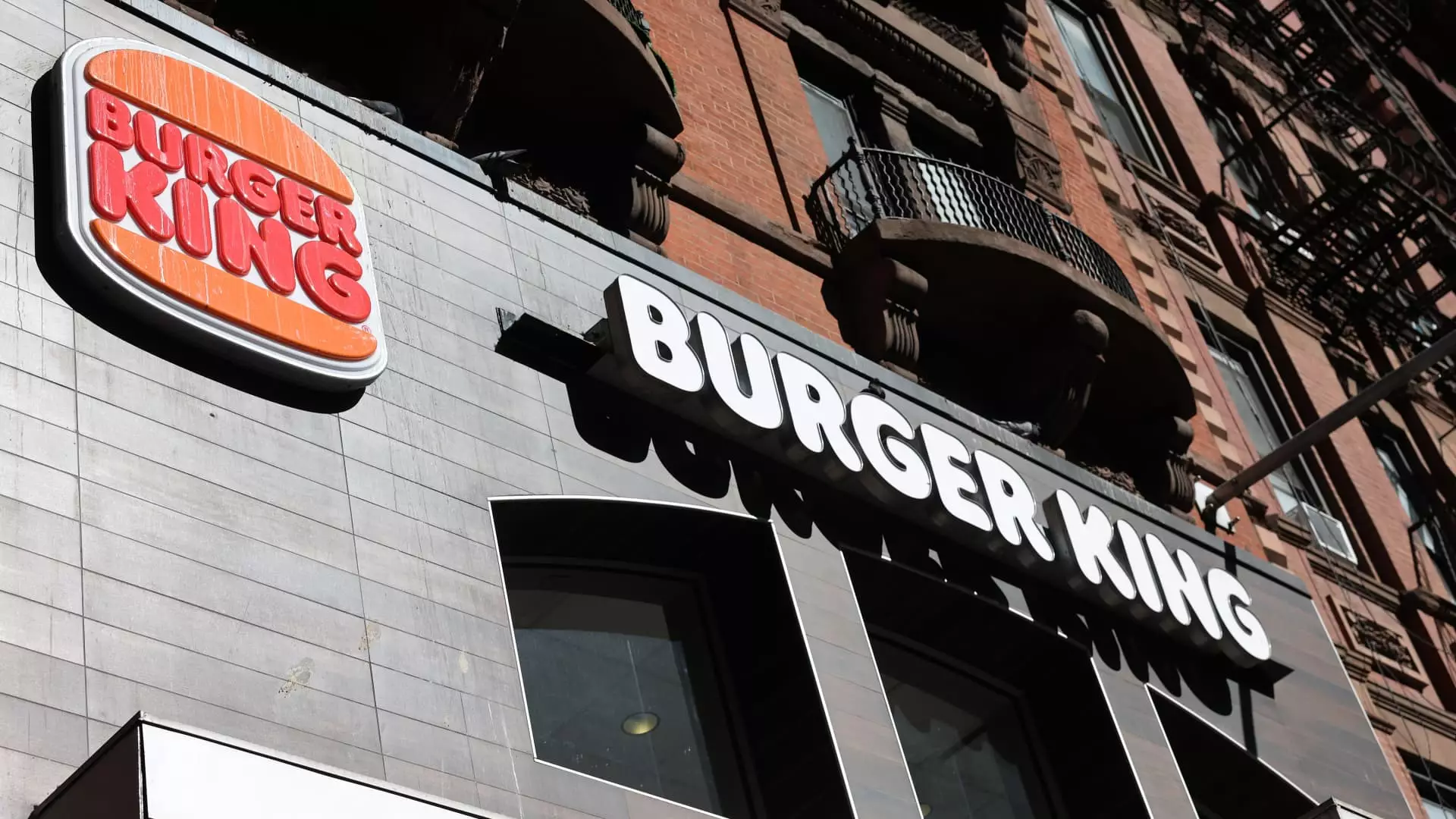Restaurant Brands International’s recent quarterly report serves as a stark reminder that not all fast-food giants are thriving amidst the turbulent economic landscape. The company has become embroiled in disappointing figures that indicate something deeper is amiss within its three biggest chains: Popeyes, Burger King, and Tim Hortons. With adjusted earnings per share of 75 cents, falling short of analysts’ expectations of 78 cents, and total revenue of $2.11 billion, below the anticipated $2.13 billion, it is clear that the Board must take an introspective look at their corporate strategy.
What stands out, however, is the alarming year-over-year decline in profits; net income attributed to shareholders plummeted to $159 million, or 49 cents per share, compared to $230 million or 72 cents last year. Concerningly, these figures suggest that instead of evolving, Restaurant Brands appears to be stagnating while other competitors continue to adapt. The loss of momentum raises a vital question: Can they reinvent the aged chains under their purview before it’s too late?
Lagging Same-Store Sales and Consumer Caution
The performance of Restaurant Brands is further exacerbated by the problematic same-store sales figures. Overall, the company reported a meager growth of just 0.1%, but the disappointment goes deeper. Tim Hortons, accounting for over 40% of the company’s revenue, reported a decline of 0.1% in same-store sales compared to the expected growth of 1.4%. Similarly alarming figures rolled in from Burger King and Popeyes, which experienced declines of 1.3% and 4%, respectively.
If we look closely, these numbers aren’t just missed targets; they reveal changing consumer behaviors and preferences. With economic pressures weighing on household budgets, customers are becoming increasingly selective. It seems the chains have failed to capture the zeitgeist of consumer desire, which is shifting toward healthier, fresher options, leaving them vulnerable to competition from both emerging chains and localized eateries.
Heightened Competition and a Stale Menu
Additionally, within a saturated fast-food market, standing out becomes increasingly challenging. While chains like Firehouse Subs are benefiting from higher revenues, it raises a concern: Are Popeyes, Burger King, and Tim Hortons providing innovative or appealing menu offerings? As the industry evolves, these chains might be failing to keep pace with changing food culture.
A pervasive stagnation in menu innovation could dampen not just sales, but the overall brand equity of these historic chains. A lack of creativity can lead to customer apathy, evidenced by the steep sales decline at Popeyes. How long can they bank on nostalgia and familiarity when the evolving consumer base craves unique and health-conscious choices?
In this era where adaptability is paramount, Restaurant Brands International needs to reassess their positioning. Instead of merely patching the old, they have an urgent responsibility to innovate and engage with new trends. Without a significant overhaul, these disappointing earnings may just be the tip of the iceberg.

